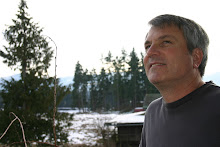The people who live here have taken great steps to keep it that way, from the treed entrance along state Highway 20 to the Historic District downtown to the marinas, the waterfront and Fort Worden State Park, with views of Admiralty Inlet.
It's at least worth a day trip, but there are a number of historic bed-and-breakfast inns and hotels for overnight stays. Another plus, the restaurant's in Port Townsend are plentiful and in most cases exceptional.
I frequently walk downtown to relax and just to take in the visitors and fresh sea air wafting off Port Townsend Bay.
In the latter part of the 1800s, Port Townsend was one of the toughest Victorian port towns on the West Coast.
It was well-known for the 17 saloons and a dozen brothels that lined its waterfront. Thriving businesses were built on the promise of the coming railroad — and then lost when the railroad chose to go through the small town of Seattle instead. Even today, a stroll through downtown Port Townsend reveals not a town approaching the 21st century, but a haven for the old and majestic, mixed with a healthy dose of tourism and funky shops. As you drive toward the heart of Port Townsend on Water Street, notice the Tides Inn on your right. The love scene in An Officer and a Gentleman was filmed there. The movie starred Richard Gere and Debra Winger. Above, safe from the slowing eroding bluff on Washington Street, is the big grey hulk of The Post Office, as the Customs House and Post Office is known in Port Townsend. Its construction began in 1885, and took eight years to complete. And yes, the carved stone building’s roof is copper.
Park anywhere northeast of the ferry terminal but in the traffic-filled summer season it is wise to park at the Haines Place Park and Ride by taking a left off the main drag at Sims Way and Haines Street, then left on 12th Street to the park-and-ride entrance. Jefferson Transit downtown shuttle buses leave there every 20 minutes.
The new Port Townsend Chamber of Commerce Visitor Center, which is scheduled to open in May, is at the park and ride. There, you will find many helpful volunteers to answer questions and point you in the right direction.
Port Townsend’s Water Street is where you begin the self-guided tour. For the most part, the buildings are easy to identify. Just look up. The names and dates are carved on most of them. Look at the buildings from across the street to get a complete view of their aging elegance. Look closely at the sidewalk for the little purplish glass blocks, placed to allow light into the old tunnels that spider under Port Townsend. Blended with the old is the new, including the Northwest Maritime Center going up at the end of Water Street and opening in two phases — just before the Wooden Boat Festival Sept. 11-13 and the other half early next year. See video.
Directions: From eastbound Highway 101, take state Highway 20 north to Port Townsend, known as The Key City. From state Highway 104 westbound coming in from Hood Canal Bridge, take the exit to Port Townsend north at state Highway 19 (Beaver Valley Road).


